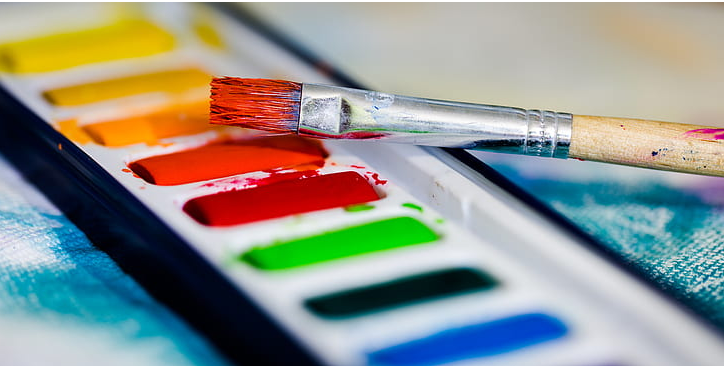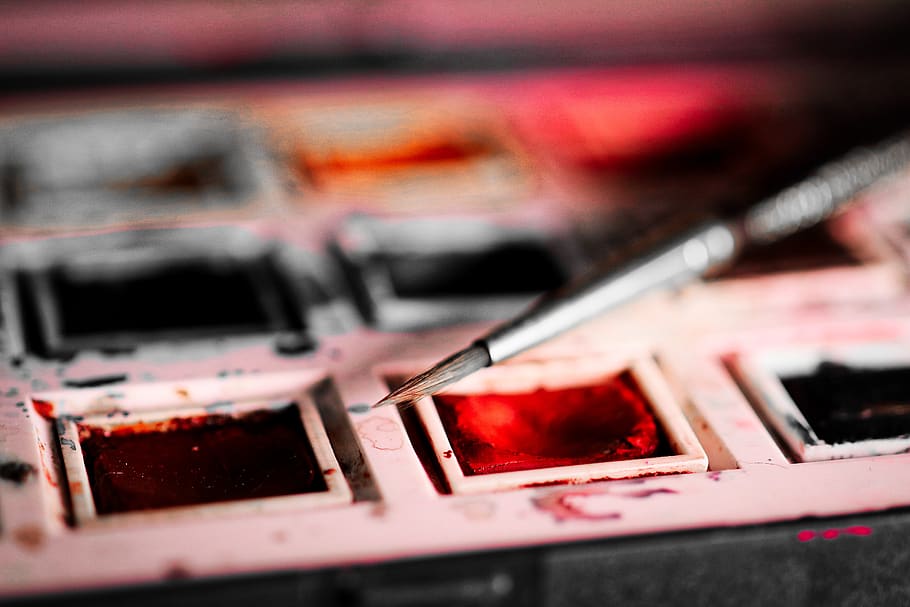The History of Red Watercolor in Art
Red is one of the most basic colors in the world. As a matter of fact, it’s one of the primary colors, the very foundation from which all other hues are made. And yet, achieving the perfect red watercolor is still tricky.
Those who have worked with watercolors know how difficult it is to get the right consistency and shade for their work. Wrong proportions can result in colors that are too transparent or too opaque.
If you want to know more about red watercolor, then you should keep reading…
The History of Watercolor Painting
Watercolor painting has been practiced for a very long time. Various ancient civilizations have created notable masterpieces by mixing pigments with water.
In fact, this type of painting has been around since prehistoric times. Early humans from the Paleolithic age were able to create artwork by mixing various materials with water and painting them on cave walls.
Two of the earliest pigments they used were ochre and charcoal. Ancient Egyptian, Chinese, and Japanese cultures also used such materials for painting.
Watercolor painting was also prominent in Europe, especially during the Renaissance period. With the advance in paper-making technology,
European artists who had been using this medium on wall paintings began using it on paper. The art of using watercolor advanced throughout the modern and contemporary era.
In fact, many Asian cultures still have a traditional way of painting using this medium. Some artists of our time also prefer this material.
The History of Red Pigments
One of the earliest uses of red pigment in history was observed in the Cave of Altamira in Spain. The prehistoric painter created an image of a bison using paint made from ground red ochre.
These artists mostly used red, black, and white paint because they were found easily in naturally occurring states.
After the Paleolithic age, red pigments were used throughout history, from Egyptian tombs (using ochre) and the wall art in Pompeii (using cinnabar) to the so-called Chinese red in Ancient China (using synthetic vermillion).
Other types of red that were used throughout history include carmine from the scale insect cochineal, red lead, and cadmium from natural vermillion.
Watercolor Mixing Techniques to Get the Right Red
Now that you know the history of watercolor and red pigment, you are now ready to try your hand at using red watercolor.
To do this, you need a palette, a set of watercolors including red, and of course, water. You should also have a brush, a piece of scrap paper, and your canvas.
You can choose caked or tubed watercolors for your project. What you need to do is to pick the type of red that you want. Then, wet your brush and dab it onto the red color and the palette.
Small amounts of water create a darker and more opaque color while larger amounts result in a lighter and more transparent one. You can test your watercolor on the scrap piece of paper you prepared.
Upon getting your desired tone, you can now start painting. Just make sure that you use your palette properly by keeping colors away from one another to avoid unintentional mixing.
Should you need to take a break, you do not have to worry about the colors you mixed. Just let them dry on the palette. When you are ready to get back to painting, you can simply dab water onto each hue to bring them back to life.
Red Watercolor in Art
Aside from Paleolithic cave paintings, red watercolor has been used in the art for a long time. One of the most remarkable examples of its use can be observed at the Florida Museum which houses a large collection of paintings featuring the state’s flora.
These works were created using – you guessed it! – watercolor.
This collection was founded by botanist Mark Whitten at the University of Florida Herbarium.
The paintings, which were made during the World War II era, were untouched for around 20 years after being donated by the artist Minna Fernald.
The work shows colorful plants in Florida, including the crimson-colored cardinal flower and the similarly colored scarlet rosemallow.
https://www.youtube.com/watch?v=000I1lopZcE
You can also observe the use of red watercolor in Indian paintings. Created by Ghasi in 1815-1825, the work Maharana Bhim Singh in Procession shows the use of opaque watercolor.
It depicts the royal procession of Maharana Bhim Singh across the kingdom of Mewar. The reds accentuate the white outfits of his subjects.
He is also shown wearing ornaments that have reddish colors.
The Bottom Line
Red watercolor has been around for many, many years. Now that you know its role not only in art but also in the histories and cultures of many civilizations, you can use this pigment to create more awesome work that can contribute to the rich culture of this watercolor.
Read Latest Posts

Hi, I'm Anthony Tran! Welcome to my site. I live in Arizona and am obsessed with all things related to building an Online Business and working from home. Learn about my journey here.
Follow Online




